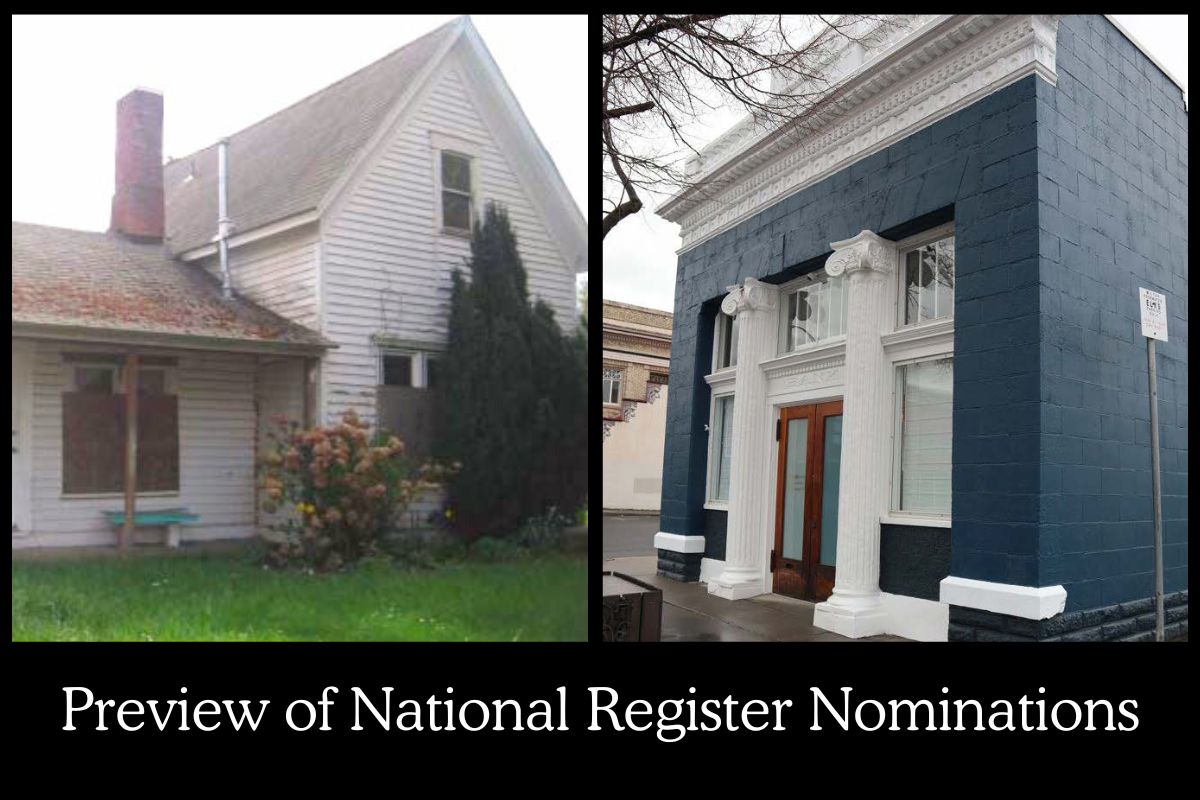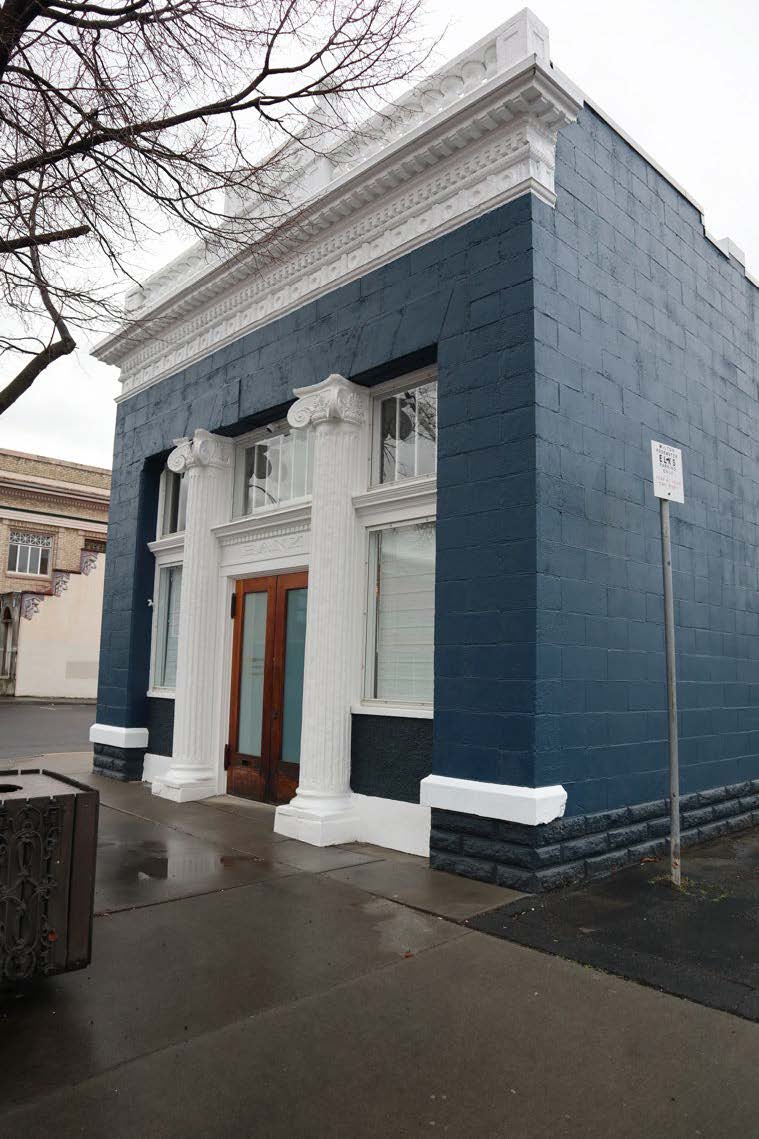
The State Advisory Committee on Historic Preservation (SACHP) meets on June 21 to consider two new nominations and one amendment to the National Register of Historic Places (NRHP). If approved, the nominations will be forwarded to the National Park Service for official listing. The J.L. Elam Bank is in the small community of Milton-Freewater and the Hannah and Eliza Gorman House is in downtown Corvallis. The Black Historic Resources of Oregon outside of Portland Multiple Property Document nomination covers statewide resources associated with six different historic contexts relating to specific ranges of time.
The SACHP meeting is open to the public and will take place in person with a concurrent virtual meeting offered. You must pre-register here if you wish to participate. The meeting will also be streamed live on YouTube.
These sites not only tell the stories of our past but also serve as anchors for economic revitalization and community pride. By acknowledging and protecting these historic places, we honor the resilience and ingenuity of those who shaped our rural landscapes.
J.L. Elam Bank
The J.L. Elam Bank is located at 601 N. Main Street, Milton-Freewater, Umatilla County, Oregon, approximately five miles south of the Washington-Oregon state line. The one-story building was constructed in 1906, expanded in 1908, and received a new façade in 1920. Originally built by J.L. Elam to house the Freewater Branch of the Walla Walla, WA based Elam Bank, the property has had many other commercial occupants over the last 118 years, including law offices, doctors office, post office, another bank, insurance agency, restaurant, and presently a winery tasting room. The J.L. Elam Bank building remains one of the best examples of the Classical Revival style in Milton-Freewater.
For more information, here’s a link to the National Register nomination.

Image: Contemporary image from the National Register Nomination, Courtesy of Tracy Schwartz

Historic image: Stage terminal building in Freewater, with earthquake damage, 1936. Courtesy Oregon Historical Society
Black Historic Resources in Oregon Outside of Portland, 1788-2002, Multiple Property Document
This Multiple Property Document (MPD) nomination establishes a framework for future National Register nominations that can now utilize the established historic contexts and historic resource property types researched and identified by this MPD. As the nomination states:
“This context provides an expansive history of African Americans in Oregon from 1788 through 2002. It begins with the first known Black person to have set foot on Oregon’s land and ends with the removal of race-related language from Oregon’s constitution. By mapping the people and the places associated with Black history in Oregon across more than two centuries, this context demonstrates that Black Oregonians had a unique and significant role in the history of the state. The context makes a chronological presentation of Oregon’s Black history, as this history is inextricably linked with state-level occurrences. The formation of early laws, the influence of national events like the Civil War, and the effects of international events like World War II will feature as they pertain to the history of Oregon, with, of course, a focus on Black Oregonians.
This context is broken into six eras, which include:
Era 1: Exploration, Expedition, and Pre-Territorial Government Actions (1788-1842)
Era 2: Black Pioneers and Government Measures to Exclude Black People (1843-1867)
Era 3: Anti-Black State Amidst a Post-Emancipation Nation (1868-1919)
Era 4: Interwar Years, the Great Depression, and the KKK (1920-1941)
Era 5: World War II, War on Poverty, and the Civil Rights Movement (1942-1969)
Era 6: The Recent Black Past (1970-2002)
Geographically, this context demonstrates the extent of the Black community in Oregon and its constituent places. While Black history in Oregon pervades all areas of the state, this MPD excludes its largest city, Portland, which is covered by the African American Resources in Portland, Oregon, from 1851 to 1973 MPD.”
For more information, here’s a link to the National Register Nomination
Hannah and Eliza Gorman House (Amendment)
The National Register amendment for the Hannah and Eliza Gorman House associates the property with the Black Historic Resources in Oregon Outside of Portland, 1788-2002 MPD by demonstrating the Gorman House’s eligibility under Criterion D, at the local level, in the area of archaeology. This property was originally listed for its association with Exploration/Settlement and Ethnic Heritage. In the 2015 nomination, the property is identified as “the only identified extant residence in Benton County that was owned and occupied by former African American slaves who crossed the Oregon Trail during the settlement period.”
For more information, here’s a link to the National Register amendment nomination.

Image: Contemporary image from the National Register Amendment of the Hannah and Eliza Gorman House in Benton County.

